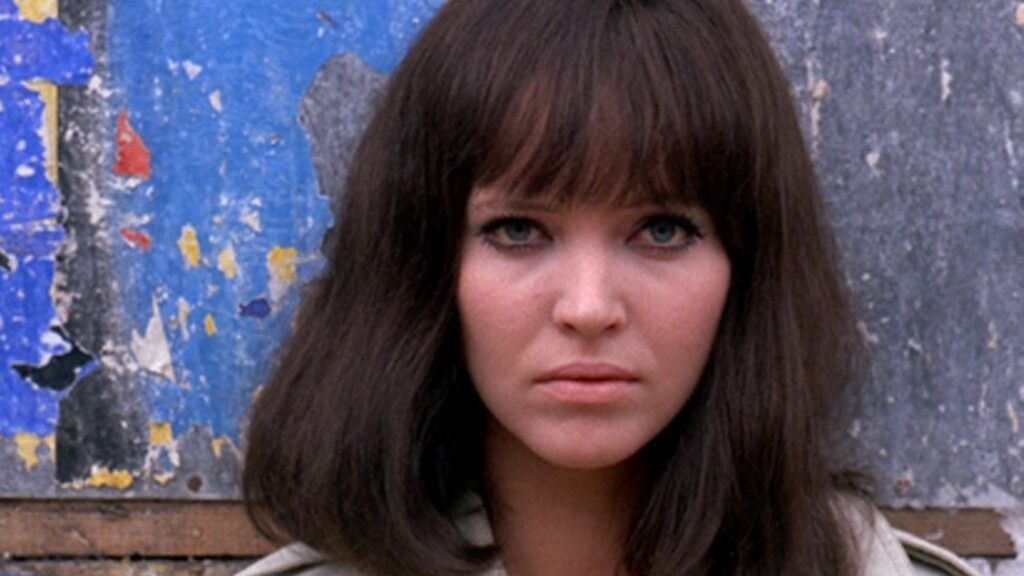Classic Film: Made in U.S.A.
Written by Ian Thomas Malone, Posted in Blog, Movie Reviews, Pop Culture
Some films are so inaccessible that the mind can’t help but gravitate toward the unique particulars of their creation as a way to explore the labyrinth. Shot concurrently with Two or Three Things I Know About Her, it is as if Jean-Luc Godard crafted Made in U.S.A. as a way to break away from what few singular strands of convention were present in the former’s narrative. Based at least in part on The Jugger by Donald E. Westlake and Raymond Chandler’s The Big Sleep, as well as its film adaptation by Howard Hawks, the film found itself exiled from American cinema for decades due to complications surrounding the rights.
Made in U.S.A. can hardly be said to be an adaptation of much of anything. There are odes of crime fiction that draw parallels to Chandler’s work, but Godard doesn’t have plot on his mind. The film essentially functions without a plot, though its narrative is so splintered that it barely appears to function at all.
Anna Karina mostly carries the film as Paula, who encounters her dead lover in a hotel room. Paula interacts with plenty of gangsters. The aura of Walt Disney looms large over the film, a figure at odds with the bleak nature of noir crime. Godard plays around with left and right repeatedly throughout the film, challenging his audience to see outside the binary. If Disney represents one pillar of the industry, with Humphrey Bogart at the other, Godard wishes to float around the clouds above them.
The color scheme of the film is absolutely beautiful. Godard paints with a palette of primary colors, mainly red and blues against a landscape of 60s Paris. For practically that reason alone, the film is worth a watch, if only to enjoy a time period where fashion enjoyed such a radical simplicity.
Made in the U.S.A. is the product of Godard’s efforts to make something that in no way, shape, or form resembles a product. Movies, the kind that Disney still puts out to this day, have beginnings, middles, and ends. Everything in life follows this same pattern, as does Made in U.S.A. from a broader standpoint. The big difference being that the audience is constantly left without the typical narrative tools through which one typically mines enjoyment from the experience.
By venturing too deep into the abstract, Godard relinquishes some of the impact his words might carry when aimed at a more conventional subject. There is plenty of Godard’s anti-war sentiments present in the film’s rather political third act. Paris, France, and life itself bear the burdens of the wars that came before us.
Godard has quite a lot to say about the cyclical nature of life’s establishments, the forces that reign over his political and entertainment realms. Made in U.S.A. often struggles to articulate these messages mostly because it isn’t very interested in letting the audience in on its thought processes. Godard found great successes in most of his other 60s output, but Made in U.S.A. is a satisfying experience for fans of his work looking to see just how deep the rabbit hole goes.











